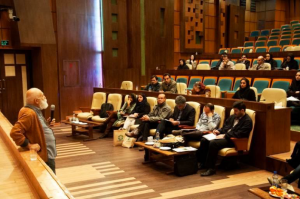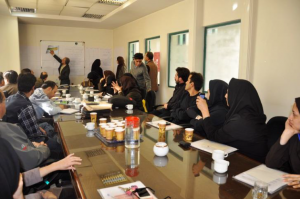First published on 06/19/2014, and last updated on 02/19/2018
By: Mina Esteghamat, ICCA Consortium Regional Coordinator for West and Central Asia
Over the past two decades, protected areas have increased in number and extent throughout the world. By 2010, 12.7% of terrestrial and inland waters and 4% of all marine areas under national jurisdiction were protected throughout the world. And yet, this does not provide an adequate coverage of the world’s ecoregions and areas of particular biodiversity importance. Moreover, the progress made in protecting these areas is limited, while half of sites crucial for biodiversity – according to the Alliance for Zero Extinction— still remain basically unprotected. In this respect, Aichi Biodiversity Target 11 of the CBD Strategic Plan for Biodiversity 2011-2020 states that: “By 2020, at least 17 percent of terrestrial and inland water, and 10 percent of coastal and marine areas, especially areas of particular importance for biodiversity and ecosystem services, are conserved through effectively and equitably managed, ecologically representative and well connected systems of protected areas and other effective area-based conservation measures, and integrated into the wider landscape and seascape.”
With the aim of achieving this target, the Iranian Centre for Sustainable Development and Environment (CENESTA) has been collaborating with the relevant state agencies that are in charge of protected areas in Iran, particularly the Department of Environment (DoE). The point of departure has been paying careful attention to the IUCN Protected Area Matrix, which is a classification system for protected areas comprising both management category and governance type. There are several concrete ways to achieve Target 11 and one of those is to consider ICCAs (Indigenous peoples’ and Community Conserved Territories and Areas) and other effective customary governance/management systems as a type of protected area, in accordance with the IUCN Matrix. Unfortunately during the past decades, some non-cooperative policies and practices kept ICCAs away from planners’ vision, with negative consequences on nature and peoples. Today, in the light of international commitments and obligations, such policies and practices are changing.
Recently, the Department of Environment (DoE) of Iran organized a workshop entitled: “Participatory approaches to governing and managing protected areas: international obligations and the situation in Iran”. This workshop aimed at reviewing the national governance and management arrangements of protected areas through participatory approaches and —in this sense– also evaluating the country’s commitments to international environmental conventions. The one-day workshop was held in the DoE premises, in Tehran, on March 5, 2014. Participating organisations included, besides DoE representatives, the Forest, Rangelands and Watershed Organization (FRWO), the ICCA Consortium, the United Nations Development Programme/Global Environment Facility/ Small Grants Programme (UNDP/GEF/SGP) and the ICCA Consortium Member CENESTA.
The purpose of the workshop –which was attended by executives, experts and NGOs, and facilitated by CENESTA— was to align the classification and governance types of protected areas throughout the country with the international obligations and commitments to the CBD and the IUCN. For that, the Programme of Work on Protected Areas (PoWPA), the National Biodiversity Strategies and Action Plan (NBSAP 2) and the Aichi Targets were examined in view of important novelties for Iran to announce at CBD COP12 in South Korea (October 2014) and at the World Parks Congress (Australia, November 2014).
The workshop saw interventions by Dr Keykha, deputy director of DoE, who welcomed the participants and underlined the importance of engaging rightsholders and stakeholders in managing conserved areas, as well as by Dr Qasriani, General Director of the Habitat Office, Dr Murali, Deputy Resident Representative of UNDP in Iran and Mrs Laleh Daraei, National Coordinator of UNDP/GEF/SGP. Dr M. Taghi Farvar, President of the ICCA Consortium, Chair of the Board of CENESTA and workshop facilitator discussed ”governance of protected and conserved areas” as described in the policies of IUCN and CBD, including ICCAs, and their potential contributions to the Aichi Targets of the Strategic Plan for Biodiversity 2011-2020, NBSAPs and PoWPA. He also discussed the forthcoming World Parks Congress (WPC) and the fact that Iran could conduct a governance assessment of its protected area system to present there. As part of that, he discussed the role of transboundary protected areas (TBPAs- Peace Parks) and the participatory approach adopted in Nayband National Park.
A lively participatory methodology was then followed, by which the management plan of Miankaleh protected area was discussed as a case example. Experts, environmental activists and other participants identified various stakeholder groups and completed the following table:

At the end, Dr Qasriany and Dr Farvar summarized and concluded the discussions. The following are important lessons to retain:
Iran should strive to fulfil its national and international commitments to the Convention on Biological Diversity by achieving the Aichi targets, particularly Target 11, by “securing protected areas and other effective area-based conservations measures up to at least 17 % of terrestrial and inland water environments and 10% of coastal and marine areas, by 2020”;
Iran should promote a full national and international understanding of the concept and practice of ICCAs—especially as represented by tribal territories and coastal and marine areas—leading to their support, promotion and recognition;
With the help of a variety of rightsholders and stakeholders, Iran should align and update the information on its protected areas about governance type and management category according to accepted international practice;
Iran can be one of the pioneer countries that officially include a variety of governance types of Protected Area in their national systems, in accordance with the IUCN Matrix;
Iran should plan to attend the CBD COP12 in South Korea (October 2014) and at the IUCN World Parks Congress in Sydney (November 2014).


